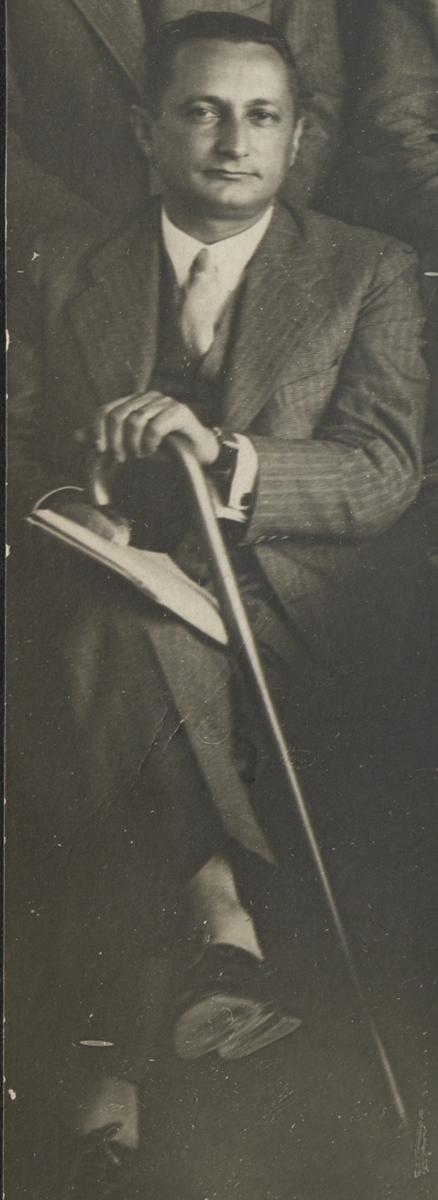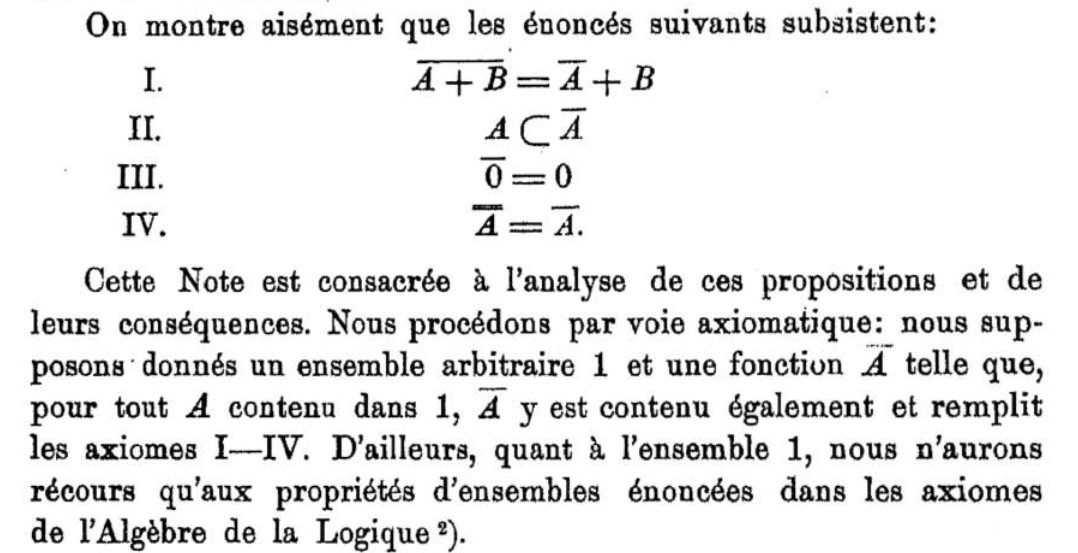- About MAA
- Membership
- MAA Publications
- Periodicals
- Blogs
- MAA Book Series
- MAA Press (an imprint of the AMS)
- MAA Notes
- MAA Reviews
- Mathematical Communication
- Information for Libraries
- Author Resources
- Advertise with MAA
- Meetings
- Competitions
- Programs
- Communities
- MAA Sections
- SIGMAA
- MAA Connect
- Students
- MAA Awards
- Awards Booklets
- Writing Awards
- Teaching Awards
- Service Awards
- Research Awards
- Lecture Awards
- Putnam Competition Individual and Team Winners
- D. E. Shaw Group AMC 8 Awards & Certificates
- Maryam Mirzakhani AMC 10 A Awards & Certificates
- Two Sigma AMC 10 B Awards & Certificates
- Jane Street AMC 12 A Awards & Certificates
- Akamai AMC 12 B Awards & Certificates
- High School Teachers
- News
You are here
The Closure Operation as the Foundation of Topology: A Mini-Primary Source Project for Topology Students
As any student of topology will tell you, the main object of study in topology, a topological space, is defined as a set \(X\) along with a collection of subsets of \(X\) satisfying three axioms or properties that concern how unions and intersections of sets behave. The sets in the collection are defined to be “open” sets, a term that is otherwise undefined. This construction is that of the open set axioms. From the open set axioms, one then develops the robust discipline of point-set topology. Many students are also aware of the fact that one can “dualize” the open set axioms by switching the roles of the union and intersection operations, making the necessary adjustments, and defining the sets in this new collection to be “closed.” It is then a helpful but basic exercise to show that these closed set axioms are in fact equivalent to the open set axioms.
What is much less well known among topology students and even topology professors is that the open and closed set axioms are not the only choices for the topological axioms! The mini-Primary Source Project (mini-PSP) The Closure Operation as the Foundation of Topology offers students and their professors an opportunity to explore an equivalent axiomatic system for grounding all of point-set topology based on the work of Polish mathematician and logician, Kazimierz Kuratowski (1896–1980).
|
|
In his foundational textbook Grundzüge der Mengenlehre (Fundamentals of Set Theory), Felix Hausdorff (1868–1942) developed a set of neighborhood axioms [Hausdorff 1914, p. 213]. As part of his 1920 doctoral thesis, Kuratowski developed an equivalent set of axioms using the closure operation. It is with the latter axiomatic system that the project is concerned. While the standard open set axioms are statements about how sets are combined, Kuratowski’s closure axioms are given by essentially defining a function on each set called the closure. This closure function associates to \(A\) a new set \(cl(A)\), denoted \(\overline{A}\) by Kuratowski, that satisfies certain properties. The goal of the project is to show that this closure operation, which on the surface seems to give a very different point of view than the open set axioms, is actually equivalent to the closed set axioms and, consequently, equivalent to the open set axioms. The project begins with an excerpt from the third edition of Hausdorff’s textbook [Hausdorff 1957] in which he discussed the closed set axioms and Kuratowski’s closure axioms. Students then work through excerpts from a 1922 paper by Kuratowski, entitled “Sur l’opération \(\overline{A}\) de l’Analysis Situs” (“On the Closure Operation in Topology”) [Kuratowski 1922], to show that a collection of sets satisfies his closure axioms if and only if it also satisfies the open set axioms.
|
In addition to familiarizing the student with the closure operation, proving the equivalence of the open set axioms with the closure axioms of Kuratowski offers students some key insights about axiomatic systems. First, students see that not only can there be more than one option for an axiomatic system, but axiomatic systems can look very different from one another. Second, students see that geometry isn’t the only branch of mathematics built on a system of axioms (much like how students learn that geometry isn’t the only branch of mathematics that utilizes proof!). As in geometry, a new set of topological axioms allows for generalization and sometimes new branches of mathematics. For example, if one does not require Kuratowski’s closure axiom 3 (as stated in the mini-PSP), one obtains something called a Čech Closure space [Čech 1966] which generalizes many structures and has interesting and important properties [Rieser 2021]. A study of axiomatic systems can thus encourage play and exploration with different, non-equivalent axioms. For if students can create their own geometry and prove theorems from their very own geometric axioms, why can’t they do the same with topology?
The complete project The Closure Operation as the Foundation of Topology (pdf) is ready for student use and the LaTeX source code is available from the author by request. Instructor notes are provided to explain the purpose of the project and guide the instructor through implementation of the project.
This project is the twenty-seventh in A Series of Mini-projects from TRIUMPHS: TRansforming Instruction in Undergraduate Mathematics via Primary Historical Sources to appear in Convergence, for use in courses ranging from first-year calculus to analysis, number theory to topology, and more. Links to other mini-PSPs in the series appear below, including the topology mini-PSPs Connecting Connectedness and Toplogy from Analysis. The full TRIUMPHS collection also offers three other mini-PSPs and two more extensive “full-length” PSPs for use in teaching topology.
Acknowledgments
The development of the student project The Closure Operation as the Foundation of Topology has been partially supported by the TRansforming Instruction in Undergraduate Mathematics via Primary Historical Sources (TRIUMPHS) project with funding from the National Science Foundation’s Improving Undergraduate STEM Education Program under Grants No. 1523494, 1523561, 1523747, 1523753, 1523898, 1524065, and 1524098. Any opinions, findings, and conclusions or recommendations expressed in this project are those of the author and do not necessarily reflect the views of the National Science Foundation.
References
Čech, Eduard. 1966. Topological Spaces. Revised edition by Z. Frolic and M. Katetov. Prague: Publishing House of the Czechoslovak Academy of Sciences; London–New York–Sydney: John Wiley & Sons Interscience Publication.
Hausdorff, Felix. 1914. Grundzüge der Mengenlehre. Leipzig: von Veit.
Hausdorff, Felix. 1935. Mengenlehre. 2nd ed. Leipzig: von Veit. Often identified as the third edition of [Hausdorff 1914].
Hausdorff, Felix. 1957. Set Theory. Providence, RI: AMS Chelsea Publishing, An Imprint of the American Mathematical Society. English translation by John R. Aumann of [Hausdorff 1935].
Kuratowski, Kazimierz. 1922. Sur l’opération \(\overline{A}\) de l’Analysis Situs (On the Closure Operation in Topology). Fundamenta Mathematica 3:182–199.
Rieser, Antonio. 2021, June 1. Čech Closure Spaces: A Unified Framework for Discrete and Continuous Homotopy. Topology and Its Applications, 296: Article 107613, 41 pp.
Nicholas A. Scoville (Ursinus College), "The Closure Operation as the Foundation of Topology: A Mini-Primary Source Project for Topology Students," Convergence (June 2023), DOI:10.4169/20230601






